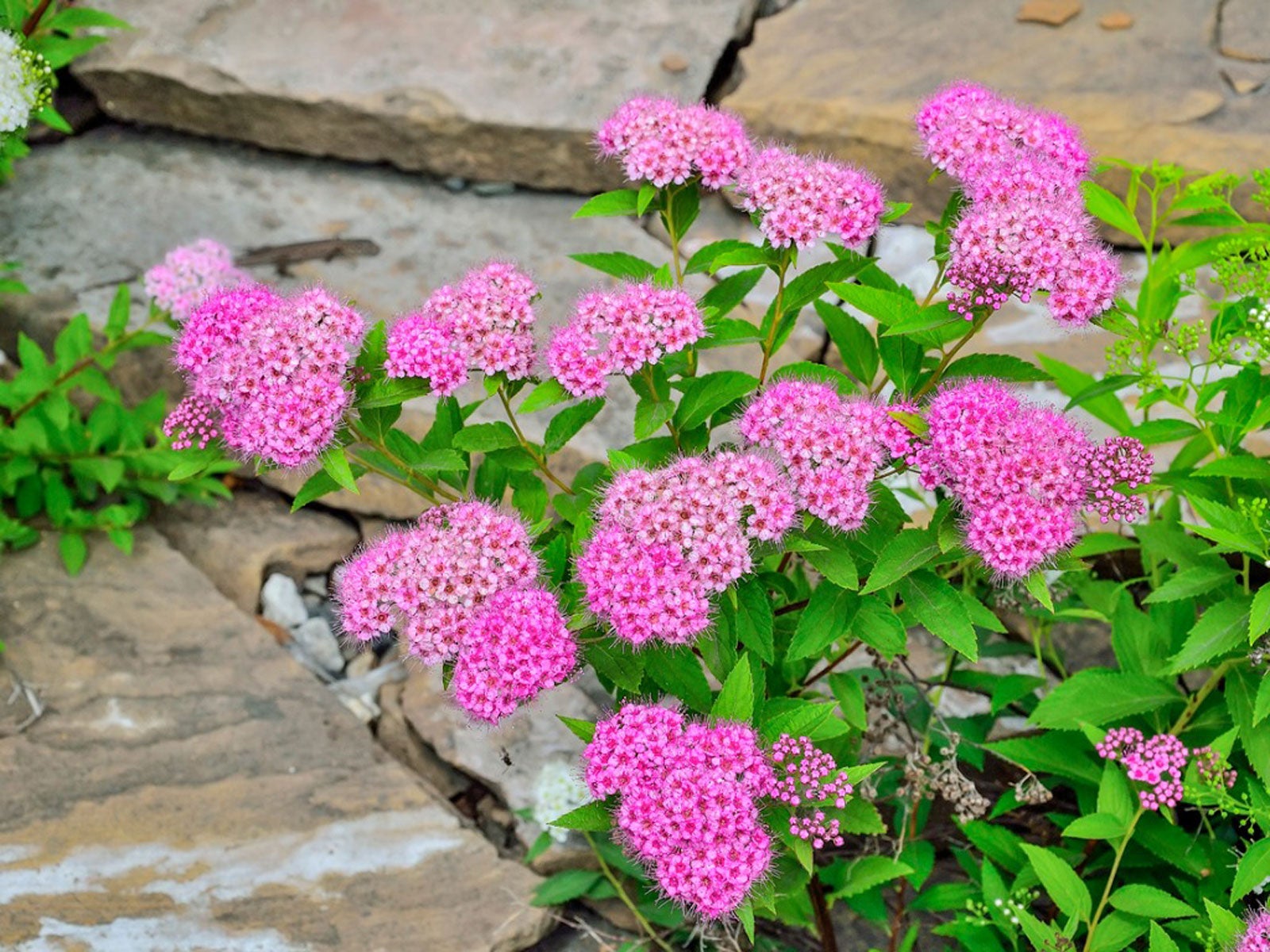Managing Japanese Spirea – How To Control Japanese Spirea Plants
A small, pretty shrub, Japanese spirea has become naturalized throughout parts of the U.S. and may be invasive in some areas.

Japanese spirea (Spiraea japonica) is a small shrub native to Japan, Korea, and China. It has become naturalized throughout much of the United States. In some regions, its growth has become so out of control it is considered invasive, and folks are wondering how to stop the spread of Japanese spirea.
Managing Japanese spirea is reliant on learning about how the plant propagates and distributes.
About Spirea Control
Japanese spirea is a perennial, deciduous shrub in the rose family. This spirea shrub generally attains a height of 4 to 6 feet (1-2 m.) across and wide. It has adapted to disturbed areas such as those along streams, rivers, forest borders, roadsides, fields, and areas of power lines.
It can rapidly take over these disturbed areas and overtake native populations. One plant can produce hundreds of tiny seeds that are then dispersed via water or in fill dirt. These seeds are viable for many years which make managing Japanese spirea difficult.
How to Control Japanese Spirea
Japanese spirea is on the invasive list in many states. It grows rapidly, forming dense stands that create shade and impedes the growth of native plants, thus causing an ecological imbalance. One way to stop the spread of this plant is not to plant it at all. However, given that seeds survive in the soil for many years, other routes of control must be utilized.
In areas where the population of spirea is sparse or in areas that are environmentally susceptible, one way to stop the spread of Japanese spirea is to cut or mow the plant. Repeated mowing of the invasive plant will slow its spread but not eradicate it.
Once spirea has been cut back, it will re-sprout with a vengeance. This means this method of managing will be never-ending. Stems need to be cut back at least once each growing season prior to seed production as close to the ground as possible.
Sign up for the Gardening Know How newsletter today and receive a free copy of our e-book "How to Grow Delicious Tomatoes".
Another method of spirea control is the use of organic foliar herbicides. Use these carefully where the risk to other plants is minimal and when there are large, dense stands of spirea.
Foliar applications can be made at most any time of the year provided the temperature is at least 65 degrees F. (18 C.). Your local garden center folks can advise you as to the safest organic application. Follow the manufacturer’s instructions and state requirements when using chemical controls to stop the spread of Japanese spirea.

Amy Grant has been gardening for 30 years and writing for 15. A professional chef and caterer, Amy's area of expertise is culinary gardening.
